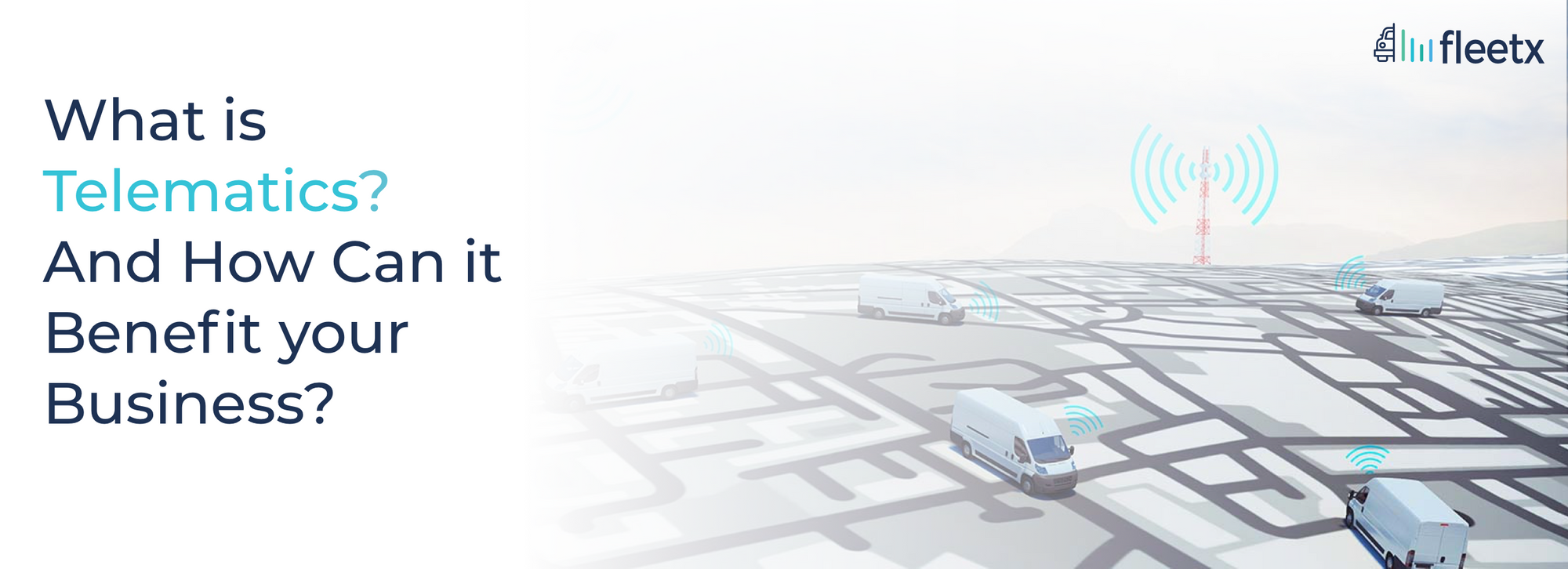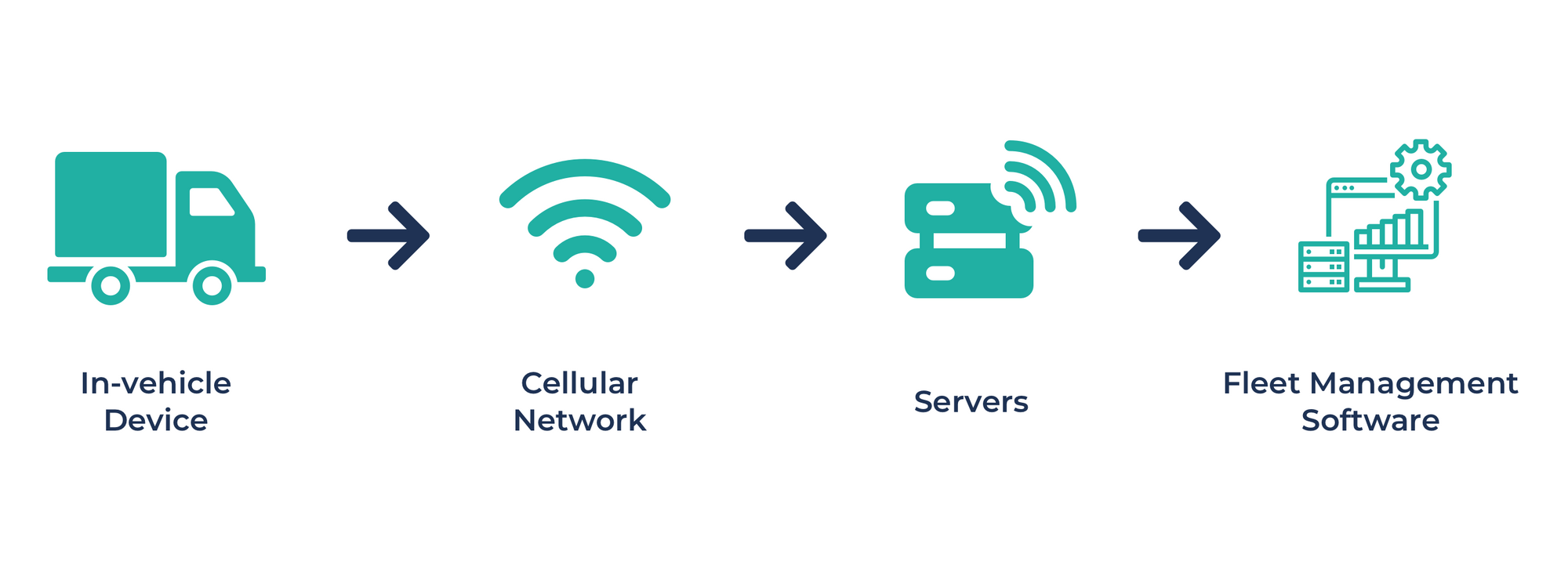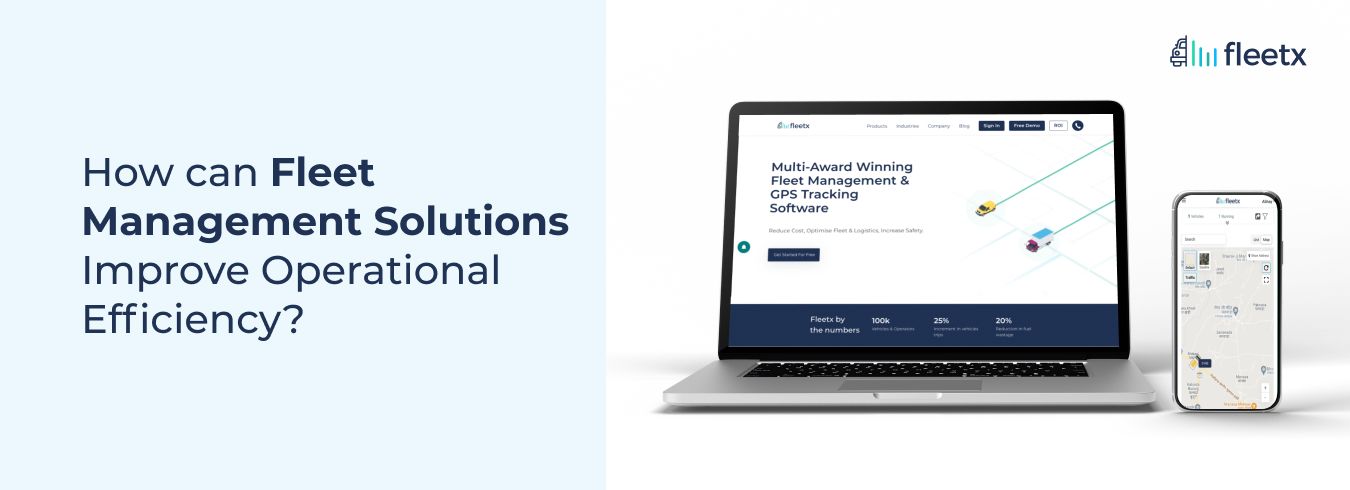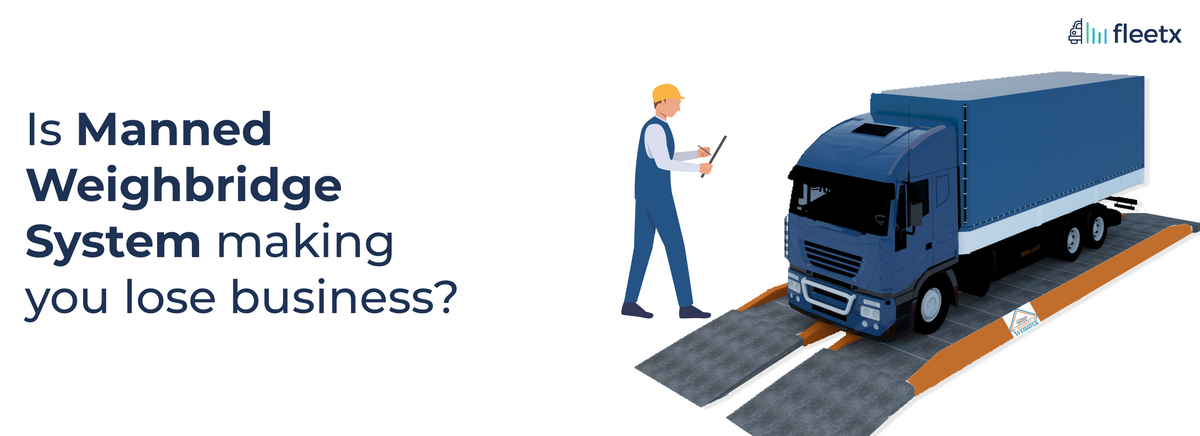
Telematics systems are primarily used by companies or service providers in the automotive or fleet management industry to offer vehicle tracking and communication services. Vehicle Telematics is what makes Real-Time monitoring of vehicles possible. A feature credited for revolutionizing the transportation industry by making the operations more transparent and technology-driven.
Telematics meaning and definition
Telematics definition can be understood as a nexus between telecommunication, i.e., how communication occurs over long distances, and informatics, making data and information communicable between computers and humans. In simple terms, if one is looking for an appropriate telematics definition, a telematics system makes it possible for vehicular data to be collected and communicated to the end-user through a monitoring software of sorts.
An excellent example for us to understand how telematics system works is through ride-sharing or e-taxi applications like Uber, Ola, etc. They use an advanced vehicle telematics system to track and communicate real-time location, speed, estimated time, and other information to both the customers and their team for all the vehicles in their fleet. Since telematics meaning is a bit clear now, we will understand how the system works in the next paragraph.
How does telematics work?

Contrary to popular belief, telematics is more than just GPS or navigation. It is an entire system for communicating every practical detail regarding the vehicle in the most efficient way. To understand how it works, we need to break it down into a list of its components.
Basics of telematics systems
The foundation of telematics is the commercialization of the Global Positioning System (GPS) and the internet, making satellite data more accessible for both private and commercial use. The advancement in GPS technology allowed for more accurate location and vehicle-related data to be collected. At the same time, the internet and machine-to-machine communication technology made it possible for that data to be communicated into helpful insight and shared across to the end-user.
Components of telematics systems
The most crucial component of a telematics system is a telematics device, popularly called a Black Box. A black box is fitted in the vehicle and can collect and transfer essential information regarding the car and driver to the telematics system, some of which include,
- GPS location
- Speed
- Mileage
- Trip recordings
- Drive times
- Time on location
- Fuel usage
- Driving related behavior (in case of harsh driving)
- Other data related to vehicle utility
- Driver-related details
More data is collected based on the kind of black box installed. In case of accidents, the black box is very crucial for insurance claims. Opening up another avenue for telematics called insurance telematics. Additional information like,
- engine load
- engine temperature
- errors
- seatbelt use
- cruise control
- status of the door (open or close)
And others can also be gathered, providing additional analysis related to driver maintenance, sustainability, etc.
Functions of telematics systems
The black box can connect to various ports, including CAN-bus, OBD-port, or native sensors like ignition, fuel gauge, door sensors, etc., to gather data. The internal algorithm makes sense of this data and creates pre-formatted information. This data is transmitted to an external platform or software in real-time through the standard cellular network using the internal SIM card. From there, the end-user can access and analyze all these metrics from a single dashboard.
Why do we need telematics technology?
Telematics has carved out an essential role for its use in various industries and businesses. Whether it is ride-sharing apps or public transport, or, to a particular extent, logistics & fleet management services, some companies wouldn't exist without an efficient telematics system. But to understand the importance of telematics, we need first to understand what questions do the existence of telematics answers. The answer to that varies depending on the industry and service.
Vehicle telematics in private & public transportation
For private and public transportation, a telematics system helps the business or the user by providing real-time information regarding the vehicle's location. It does so by using GPS technology to offer navigation, routing, fleet monitoring, which has become an integral part of the way we use public and private transport today. Today, if we can,
- Navigate our cars to the required destination without asking for directions from bystanders,
- Track and enquire about the location of the bus or train in real-time,
- Monitor the status of our food delivery through our phone screens,
- Get an estimated time for us to reach our destination in a ride-sharing taxi,
And so much more, we have a highly efficient and technological driven vehicle telematics to thanks!
Vehicle Telematics in industry and fleet management
Automotive telematics has revolutionized the logistics industry in more than one way. Tracking logistics operations with thousands of vehicles in their fleet was impossible until a couple of years ago. The entire process of logistics & transportation of goods was riddled with inefficiencies due to the lack of transparency in the fleet movement. Fleet managers were dependent on drivers for updates through phones. In remote areas, poor signal strength meant a complete lack of communication.
The lack of foresight resulted in inefficiencies like theft of goods, high operational costs resulting from poor route planning & navigation, delayed shipments, loss of revenue, and countless others, which incurred heavy financial and operational burdens of businesses. Today, with the introduction of automotive telematics, companies and fleet managers can,
- Monitor and track the location of each vehicle in their fleet through a centralized system,
- Plan and navigate through the most efficient route for each trip,
- Save cost by employing telematic-based fuel management systems to monitor fuel usage,
- Manage and schedule fleet maintenance and breakdowns,
And so much more. Telematics has brought in much-needed transparency to logistics operations required for optimal performance.
Truck telematics for construction vehicles
A use case for construction vehicles would be mixing transport trucks which uses a revolving drum attached to the vehicle for mixing materials such as cement. A Telematics system for such vehicles involves a drum rotation sensor that detects rotations at a location. Integrating such sensors with a telematics system could help companies accurately monitor drum rotations by measuring rotating speed, total drum operation time, number of starts, temperature, among others. These metrics can be transmitted to the server and made available to the user via their fleet management software on their phone or computer. By accurately measuring such metrics companies can improve their operational efficiency and improve the life of the vehicle as well.
Another use case for truck telematics for construction vehicles could be preventing cargo theft and unwanted cargo drop-offs which are quite common with construction vehicles like dumpers while loading and unloading. Dumper vehicles fitted with sensors like tilt sensor, load dump proximity sensor integrated with telematics system offer complete transparency in loading-unloading operation, avoid blind spots, and monitor the tilt angle while loading and unloading which helps the operator keep track of the load, avoid breakdowns, and mishaps.
What are the top 5 benefits of using telematics for commercial operations?
As discussed above, it is a no-brainer that a wide array of users uses telematics technology. They can range from taxi-aggregators like Ola, Uber, and large-scale fleet service providers or logistics companies. However, telematics offers benefits that every user can realize regardless of their use case or industry despite the various use cases and drives. Let's look at some of the key benefits companies get by employing telematics technology in their operations.
1. Telematics systems offer complete transparency in operations to business owners.
Equipping vehicles with telematics systems offer the amount of transparency and visibility that was never possible before. Vehicle telematics allows companies and fleet managers to track each vehicle in their fleet at all times through a single dashboard. By offering a robust Vehicle Tracking System, telematics enables companies to reduce their transportation system inefficiencies and avoid malpractices and unwanted stops by drivers. It improves the quality of service offered as well as reduces operational costs.
2.Telematics systems improve accountability and safety
With much deeper and accurate insights and information related to drivers and vehicles, companies often see an exponential improvement in overall productivity in their operation. Services like Driver Behaviour Analytics & Safety allow for better evaluation of driver performance considering factors like fatigue driving, over-speeding, sharp turns, SLA violations, and various other metrics. It enables companies to hold rash drivers accountable and reward more productive employees, thus, improving their service quality and raising safety standards.
3. Telematics systems improve productivity and overall operational efficiency.
When coupled with another telematics-related tech, the black box can track fuel consumption and engine performance. Such features enable companies to track and minimize instances of engine idling which is the leading cause of unnecessary fuel consumption. In addition to that, companies can follow up with timely vehicle maintenance, which improves vehicle longevity and prevent expensive maintenance cost by tracking performance in real-time. Such vehicle telematics features cut operational costs by cutting unwanted expenses and enhancing the productivity of vehicles and overall operation.
4.Telematics systems enhance route planning and fleet optimization for better performance.
Telematics technology is capable of gathering and processing vehicle data in real-time for each trip. This data can prove a gold mine when optimizing routes. The telematics system uses historical data to predict and assess vehicle performance and provide accurate predictions and analyses concerning each trip. Metrics like estimate-time to delivery, fuel consumption, driver behavior, and performance, among others, enables companies to provide a better and more punctual service while maximizing their efficiency. Scheduling and Route Planning features allow fleet managers to choose the most efficient route for each trip using historical data and real-time traffic monitoring and navigation. High traffic, congestion, closed roads, and other circumstances can be avoided allowing for a better delivery experience.
5.Telematics systems offer better compliance and seamless integration.
Commercial logistics and transport have a very stringent set of regulations and demand extensive compliance. Tracking and complying with requirements like hours of service, electronic logging, Vehicle documents, E-way bill, among others, for all drivers and vehicles while operating large fleets can often be challenging and borderline impossible. Advance telematics system offers seamless integration with other services that cater to such compliance. Additionally, features like Electronic POD management making invoicing, challans, and other business-related documentation more accessible.
Should your business use a telematics system for better fleet management?
The logistics industry is rapidly evolving to becoming more technology-centric; however, there is still a need for widespread acceptance in day-to-day operations. The industry is still struggling with questions, and some of the most common ones are mentioned below.
- How do I cut down operational costs for my fleet?
- How to reduce fuel consumption and engine idling?
- How to check if my driver is speeding or rash driving?
- How do I prevent theft of goods in on-route vehicles?
- How to keep track of all the cars in my fleet?
- How can I avoid challans for expired Eway bills?
On a closer analysis of these questions, one can conclude that most of the problems mentioned above can be resolved by equipping the fleet with an advanced telematics system. Whether the fleet is small or large, operation intra-city or pan-country, companies, in general, have greatly benefitted from employing telematics systems in their operations.
Fleet Management companies like fleetx offer the most advanced and integrated telematics for every industry and use case. Driven by data & AI, telematics is the next leap in tech for logistics and transportation, which is on the rise.
What is telematics?
Telematics is an interdisciplinary field which includes computer science, electrical engineering, telecommunications, and vehicle technology.
What is telematics system?
Telematics systems is a system that collects information about vehicle location, driver behavior, engine diagnostics, and vehicle activity. They then display this information on software platforms to assist fleet managers in resource management






